The past and the future of the Ryukyu. Karate homeland does not lose hope of getting rid of American bases
Ryukyu Islands - Japan or not?
Recall that the Ryukyu Archipelago, also known as the Liekei Islands, is located in the East China Sea, southwest of Japan. If we describe the position of the Ryukyu Islands, they are approximately between Japan and Taiwan. At present, the Ryukyu Islands are part of the Japanese state, and their inhabitants, the Ruukusians, are often referred to as Japanese. Meanwhile, this view is wrong. At least, many famous ethnologists say that the aborigines of the Ryukyu Islands are a separate ethnic community, although closely related to the Japanese. Nowadays, backpackers differ from Japanese in the first place by their language. In the Ryukyu Islands, the Ruuku languages belonging to the Japanese-Ruuku language family are common. Backpack languages include Amami-Okinawa language (Okinawa and Amami dialects on Okinawa and Amami islands), Sakisima language (Miyakos dialect on Miyako islands, Yaeyam dialect on Yayyama islands), and Yogon language (Yonaguni island). At the present time, the packish languages are gradually being supplanted even from the everyday life of the inhabitants of the island. It is rare to hear the representatives of the young and even the middle generation speak in local dialects. However, the rukuisky languages remain native for a million people, most of whom are elderly. Young people, if they learn the rukuisky languages, only if they are brought up by their grandparents. Naturally, the Backyon languages retain their presence in the countryside on the least urbanized islands. On the largest island of Okinawa, the local Okinawan language is almost completely superseded by Japanese. It should be noted that the Ruuku languages are fairly distant not only from Japanese, but also from each other - their speakers are usually not able to understand each other. Therefore, almost all along the medieval and new history of the archipelago, the language of official documents and interethnic communication of the educated part of the backpackers remained classical Chinese. Only about a century and a half ago, after the final conquest of the islands by Japan, Japanese began to penetrate Ryukyu, which by now is the main language of official documents and interethnic communication on the islands of the Ryukyu archipelago.
The subtropical islands of the Ryukyu are unique not only by their nature, due to the geographical location of the archipelago that differs from the nature of Japan itself, but also because it developed in a completely different direction than the "mainland" Japan. The history of the Ryukyu archipelago, the Ruchu statehood that originated there, the relations between the Ryukyu and neighboring countries, is not often the subject of scientific research, and even journalistic articles even more so. Meanwhile, the Ryukyu Islands have a rich and ancient tradition of their own statehood, without consideration of which it is impossible to understand the meaning of modern centrifugal trends on the Ryukyu Islands. Indeed, many backpackers still do not consider themselves to be Japanese and see the need to develop a national liberation struggle for secession from Japan, or at least for granting the archipelago the status of broad autonomy. Of course, if the Ryukyu Islands did not have the traditions of their own statehood, and the Ryukyu people had a historical memory, then the question of a possible separation from Japan would never have arisen. But, despite persistent attempts, Japan has not yet succeeded in finally assimilating the backpackers and erasing from them the memory of national statehood. As is known, the formation of Japanese statehood began even before our era and, according to historians, covered the period from the 3rd c. BC. and to the III. AD Japanese statehood was formed on the basis of the agricultural community, and agriculture for a long time remained the basis of the Japanese economy. Another thing - the island of Ryukyu. Here, statehood developed on the basis of the shell trade, and the formation of the institutional structure of the backpacky state was much slower than in Japan. This historical lag, in particular, was due to the great weakness of the Ryukyu state in comparison with its northern neighbor. Since the Ryukyu Islands were originally more focused on maritime trade, they established close ties with the countries of Southeast Asia and with China. For many centuries, China has become the most important economic partner and political patron of the Ryukyu Islands.
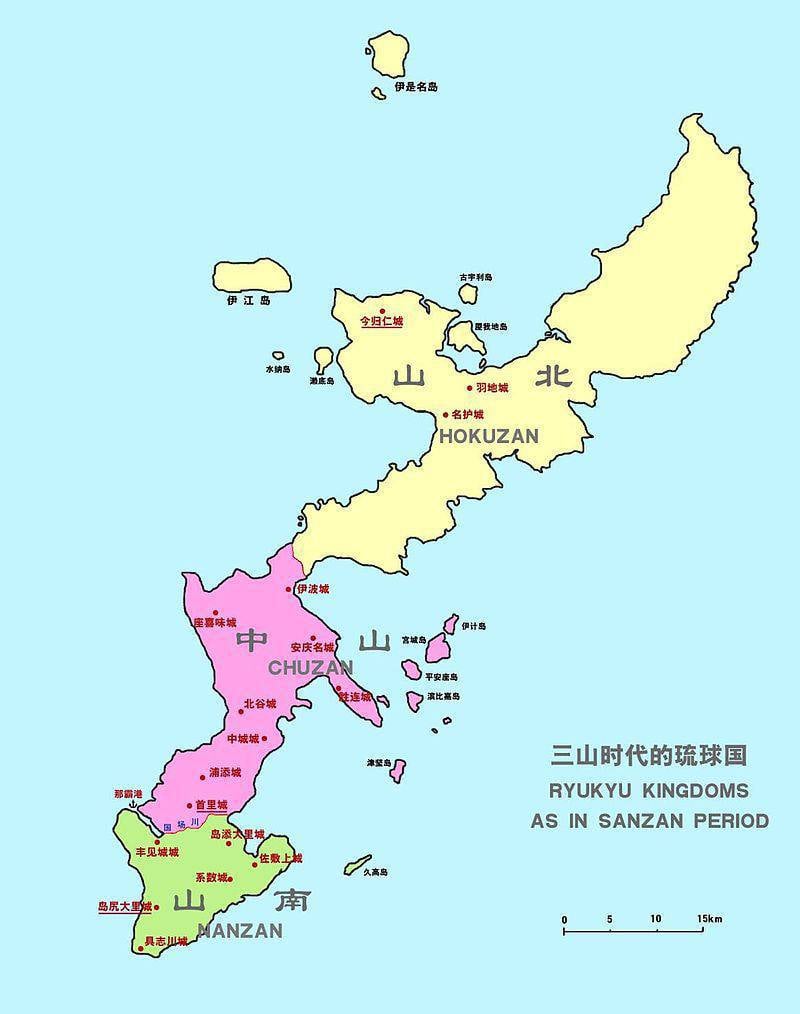
"The Kingdom of the Central Mountain"
The development of the backpack culture also occurred under the influence of China. Ryukyu’s diplomatic relations with China were established in 1372, and in the first half of the 15th century. the island of Okinawa united under the rule of the royal dynasty of Shô (distinguish the First and Second Shy dynasties). Back in the XIII — XIV centuries. in Okinawa, there were the principalities of Hokudan ("Northern Mountain"), Nanzan ("Southern Mountain") and Tyuzan ("Central Mountain"). These principalities were in vassal dependence on China, which did not prevent them from waging a fierce internecine struggle for dominance on the island. The strongest of the three states was the Duchy of Tyuzan, founded in 1314 by the nineteen-year-old feudal Tamagusuku, who was able to unite the scattered fiefdoms of the central part of Okinawa and to crush the resistance of the small rulers. Nanzan Principality originated in the southern part of Okinawa. He was created by Ofusato, who ruled in the village of Ozato. Despite the fact that the Nanzan principality was the smallest of the three feudal states of Okinawa, it had a developed economy and led active trade with other countries. Finally, the third state formation in Okinawa was the principality of Hokuzan, founded by Prince Hanji. Although Hokuzan was lucky with the territory - it was the largest of the feudal possessions of the island, at the same time, the principality remained the least populated and much less developed economically than its neighbors. Hokuzan maintained trade relations with the states of the Malay Archipelago, but on the whole was considerably inferior to both Nanzan and Chuzan in terms of the standard of living of the population and economic opportunities. It is not surprising that it was Hokuzan who became the first object of aggressive interest of the strengthened rulers of the principality Chuzan. In 1416, the Duchy of Tuzan took the upper hand in the internecine struggle of the three Okinawan states. The son of his ruler, Prince Hashi, captured Hokuzan, and in 1421, inheriting the throne of the principality from his father, received from the Chinese emperor Zhu Di the title of Wang, that is, the king, and the last name Shou (in Chinese, “Shang”). In 1429, Mr. Van Sho Hashi captured the third principality of the island, Nanzan, uniting all of Okinawa under his rule. It was Hashi who built Shuri Castle and the port of Naha. By the end of the XV century. Okinawa’s vans managed to establish control over the entire southern part of the Ryukyu Islands, and by 1571 they had also established their power over the northern islands of Amami and Oshima. The official name of the Ryukyu kingdom, which was used in all foreign policy documents, remained the “Kingdom of Chuzan”.
The period from the middle of the XV to the beginning of the XVIIth centuries was the heyday of the packish statehood. (during the reign of the Second Syo Dynasty in 1469-1609).
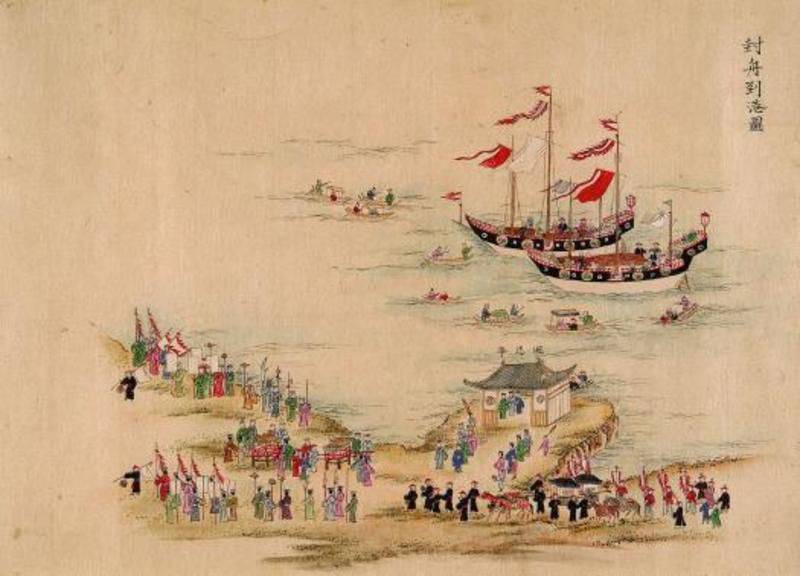
For a long time, the kingdom of Ryukyu played a key role in organizing trade between China and other countries in the Asia-Pacific region, which contributed to the economic prosperity of this island nation. Ryukyu conducted trade with China, Japan, Korea, Vietnam, the islands of the Malay archipelago, Siam. The active participation of the Ryukyu merchants in maritime trade in the Asia-Pacific region was facilitated by the policy of banning maritime trade pursued by the Chinese Ming Dynasty. Since the Ryukyu Kingdom was in vassal relations with China and paid tribute to the Ming dynasty, on Ryukyu ships fleet the ban on maritime trade did not apply. Moreover, the Chinese authorities allowed the opening of the Ryukyu trading post in Quanzhou. Ryukyu's weighty position in the region’s maritime trade also contributed to increasing the authority of this small state in foreign policy relations. Thus, the rulers of Ryukyu often acted as mediators in the negotiations between Chinese and Japanese representatives. In addition to cultural ties with China, from the middle of the 1609th century the Kingdom of Ryukyu developed relations with Japan. In particular, Ryukyu Buddhist monks began to go to study in Japan. However, the Ryukyus rulers did not pay due attention to the development of military and naval affairs, as well as the construction of defensive structures on the islands. Subsequently, this nuance of development of the Ryukyu statehood had a very negative effect on the kingdom. At first, Ryukyu lost privileges in maritime trade and was gradually supplanted from the role of the main intermediary between China and the countries of the southern seas. Ryukyushtsev already in the second half of the XVI century. ousted by enterprising European merchants, relying on the support of well-armed warships with trained military crews. Then the kingdom of Ryukyu could not resist the external invasion - in 1450, the troops of the influential South Japanese clan Satsuma invaded the archipelago. As a matter of fact, conflicts with the powerful northern neighbor accompanied the Ryukyu kingdom throughout almost its entire history. So, in 1527, the Japanese prince Hosokawa Katsumoto captured a ship belonging to the Ryukyu Kingdom. Since 1588, Japanese pirates began to carry out regular predatory raids on Okinawa, to protect which the Ryukyu kings had to build two fortresses. In XNUMX, the Japanese shogun Toyotomi Hideyoshi demanded that the Ryukyu kingdom take part in the Japanese campaign against Korea, but the ruler of the Ryukyu, Sho Nei, did not obey the shogun's request and broke off diplomatic relations with Japan.
Japanese and Chinese in the life of the Ryukyu
At the beginning of the seventeenth century, the daimyo (ruler) of the feudal possession of Satsuma, in southern Japan, drew attention to the kingdom of Ryukyu, located south of his possessions. The rich kingdom, besides not having a strong army, aroused the understandable interest of the Japanese ruler. In 1603, the daimyo demanded that the Ryukyu kingdom submit to Japan, but Syo Nei refused, after which daimyo Shimadzu Tadatsune addressed the Tokugawa shogun and took permission from him to conduct an armed operation against the Ryukyu kingdom. In the spring of 1609, Satsuma's troops invaded the territory of Okinawa. The well-armed and trained Japanese samurai quickly defeated the Okinawan militia, stormed the castle of Shuri and captured the rucksuit van Seo Nei.
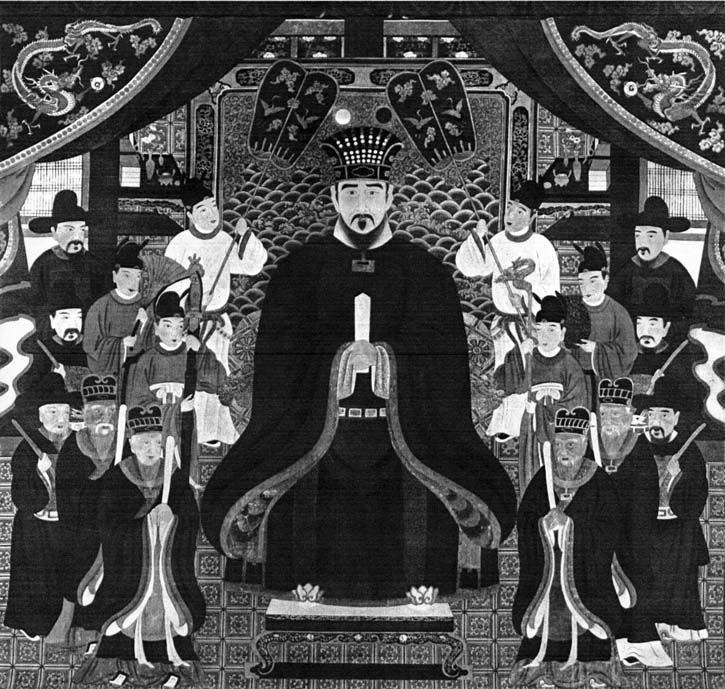
Ney was sent to Japan for a period of two years. In 1611, the captive rukyu ruler was allowed to return home, but was forced to sign a peace treaty with Japan, according to which the Ryukyu kingdom recognized its vassalage towards Satsume. The Amami and Oshima islands became part of the Satsuma, while the rest of the Ryukyu archipelago remained under the control of the Ruiu vans. By the way, this division has been preserved to this day - in modern Japan, Amami and Oshima islands form part of Kagoshima Prefecture, and the rest of the archipelago is part of Okinawa. It is noteworthy that after establishing dependence on Satsuma, the Ryukyu kingdom was not freed from vassal obligations towards China. The Ryukyu vans had to pay double tribute - to the Chinese emperor and satsumsky daimyo. In 1615, relations between China and Japan seriously deteriorated, after which China closed its ports to the Japanese fleet. The Ryukyu kingdom was practically the only reseller between Japan and China. Understanding perfectly the strategic importance of the Ryukyu for Sino-Japanese trade, daimyo Satsuma demanded that the Vans of Ryukyu play the role of an independent state. To hide in the Ryukyu Kingdom, bans on Japanese language, Japanese names and clothes were imposed, and the Japanese were forbidden to visit the territory of the Ryukyu Kingdom without special permission. However, the Chinese leadership still received information about the true state of affairs in the Ryukyu kingdom. Nevertheless, given the importance of Sino-Japanese trade, both sides pretended that the Ryukyu kingdom was an independent state.
Thus, Ryukyu received a special status, being under the control of the Japanese principality Satsuma, and having vassal obligations towards China. However, if the obligations in relation to Japan were quite serious and consisted in the annual payment of impressive tribute, then the Ruuku dependence on China was rather ceremonial. For a long enough period of time, from the XVII to XIX centuries., The Ryukyu kingdom preserved the authentic management system and culture, which differed from both the Japanese and the Chinese. Many Japanese historians consider the Ryukyu of this period as “a foreign state within the Japanese confederation”.
It should be noted that the vassal obligations in relation to the principality of Satsuma did not become an obstacle to the further development of the original backpack culture. The Okinawan village of Kume has become a real center of culture and education of the Ryukyu archipelago. Here was created the only educational institution in the state in which Chinese philosophy and literature were taught. Students from Kume were sent to continue their education in China - in Fujian Province and in Beijing. So, despite the vassalage of Japan, it was Chinese culture that remained the main source of influence on the culture of the Ryukyu Islands. Confucian philosophy, Chinese literature and Chinese were considered mandatory subjects for the study of educated youth from noble families. It was Kume scientists who wrote the first books on the history of the Ryukyu kingdom. By the way, despite the vassal of the Japanese principality of Satsuma, the Ruuku leadership maintained full autonomy in matters of domestic policy and administration, guided not by the Japanese, but by the Chinese model of management organization.
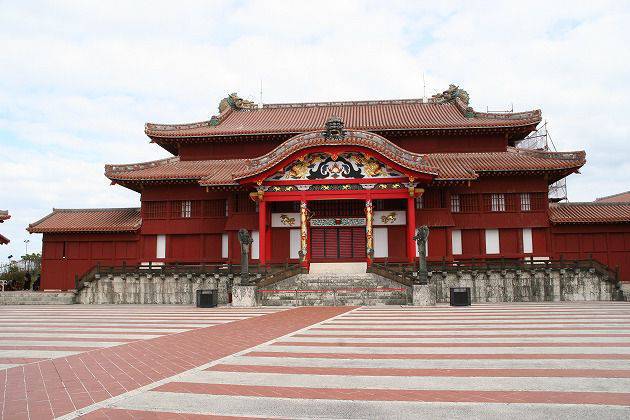
Pro-Chinese sentiment was very strong among the backpackers of the nobility, who considered China to be a cultural country, and Japan - the “land of barbarians”. The attitude towards China as the source of all positive moments in the life of the island, starting with religion and philosophy and ending with numerous household and household borrowings, prevailed on the Ryukyu. The history of Ruiku martial arts, known as tote, or okinawa-te, is also associated with Chinese cultural influence on the Ryukyu Islands. It was on the Ryukyu Islands that the world-famous karate was formed and developed - under the influence of the Chinese Wushu styles that penetrated the islands, practiced in Fujian Province, which had the most developed trade and cultural ties with Okinawa. Historians call the first karate teacher a certain Sakugawa, who studied in China, and later opened his own martial arts school in Okinawa. Most of the first karate masters who laid the foundations of this martial art and popularized it in Japanese society also came from the island of Okinawa. For example, Matsumura Sokon served as a bodyguard for the Ruuku Wang Sho Ko, then at the Van Sho Se Iku and the last Ruuku monarch Sho Tae.
Submission Ryukyu Japan
The Meiji Revolution in Japan boosted national political ambitions. Overcoming feudal fragmentation also set the Japanese government the task of resolving the political status of the Ryukyu Islands. Since the Japanese leadership sought to establish complete dominance on the islands, it was decided to include the Ryukyu in Japan, thereby destroying the Ryukyu statehood. In 1871, the institute of khans, autonomous principalities, was abolished in Japan, instead of which prefectures were created. The state of Ryukyu, which was in vassal dependence on the principality of Satsuma, was temporarily subordinated to Kagoshima Prefecture, although it retained the status of a separate administrative unit. Meanwhile, a tragic incident occurred, which served as an official reason for the liquidation of the Ryukyu statehood. In November 1871, 54 fishermen from the Ryukyu Islands were killed on the island of Taiwan by local Gaoshan tribes (natives close to the Indonesian peoples). Japan's response was to put pressure on the Ryukyu to become part of Japan, ostensibly for the Ryukyus' own security. In 1872, the Japanese government forced the Ryukyu authorities to officially apply to the Emperor of Japan with a request to rename the Ryukyu state into the Ryukyu principality - Ryukyuhan. So van Ryukyu Sho Tai received the status of a Japanese nobleman - kazoku and became the prince of the Ryukyu principality, administratively subordinate to the Ministry of Foreign Affairs of Japan. After Ryukyu was formally incorporated into Japan, in 1874 the Japanese government sent a military expedition to the island of Taiwan. At the same time, Japan presented China with a demand for the payment of indemnities and recognition of the status of the Ryukyuans as "a people dependent on the Japanese state." Thus, the Beijing Protocol confirmed for the first time the status of Ryukyu as a territory that is part of Japan, and the inhabitants of Ryukyu as citizens of Japan.
In May 1875, the Japanese government decided on the candidacy of the official responsible for the further integration of the Ryukyu into the Japanese state. They became Matsuda Mitiyuki (1839-1882) - a native of the samurai family of Kubo, who was a vassal of Tottori Khan of the province of Inaba. As a child, Mityyuki was given to Matsuda as his adopted son, and in 1868, Mityyuki, who was by this time seriously interested in politics and supported the Meiji Revolution, entered the public service. He served as a clerk at the Imperial Chancellery and deputy judge in the Kyoto City Court. In 1871, he was appointed chairman of the Otsu prefecture, and in 1872, the first chairman of Shiga prefecture. In March 1875, Matsuda was transferred to the Ministry of the Interior of Japan and appointed senior secretary. In this capacity, he headed the negotiation process with representatives of the Ruchyuk principality. In July, 1875 Matsuda Mitiyuki handed over to the leadership of the principality of Ryukyu a list of Japanese requirements. First, Japan demanded that the embassies from Ryukyu to China be stopped, that the Qing empire be paid in tribute and that the Qing emperors be granted labels on the board. Secondly, the Ryukyu principality was supposed to adopt the Japanese motto of the Meiji government instead of the Chinese motto of government. Thirdly, the prince of the Ryukyu Syo Tay was soon to personally arrive in the capital of Japan with an embassy of thanks and rich gifts. However, the rukuyskuyu leadership, despite the obvious superiority of force in Japan, rejected these demands, degrading the dignity of the ruling rukuyskoy dynasty. In January, 1879 Mr. Matsuda Mitiyuki again arrived at Ryukyu and re-voiced the above requirements, but this time the Rucua prince refused to submit to Japan. In March, 1879 Mr. Matsuda again arrived at Okinawa at the head of a squad of Japanese soldiers and 300 police officers from 160. 11 March 1879 Mr. Matsuda Mitiyuki officially announced the liquidation of the Ryukyu principality and its transformation into Okinawa Prefecture. By March 31, Matsuda managed to incline the Ruuku nobility to the surrender of Shury Castle, the main military fortification of the island, after which the sovereign statehood of the Ryukyu archipelago was finally eliminated. After the surrender of Shuri Castle, the last van Ryukyu Seo Tai (in the photo) left Okinawa and left for Tokyo. He lived there even more 20 years and died in 1901 in his estate in Tokyo.
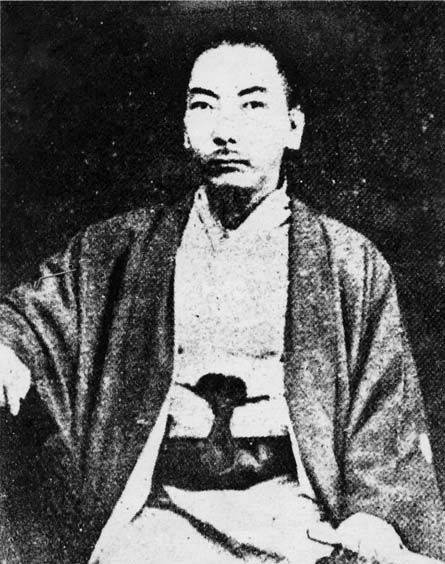
Naturally, the annexation of the Ryukyu Islands caused considerable discontent among the local population. Some representatives of the Ruiku nobility went to China to complain about the behavior of the Japanese invaders and to enlist the support of the Chinese emperor, who did not want to lose power over the archipelago and, especially, to endure "spittle in the face" from Japan. The Chinese generals spoke of the need to start hostilities against Japan, but Chinese Foreign Minister Li Hongzhang tried to resolve the conflict by attracting a third-party intermediary. They were the former US president Ulysses Grant, who was at that time in China. In July, 1879 Ulysses Grant arrived in Japan and invited the Japanese government to enter into negotiations with the Chinese side and resolve the issue of belonging to the Ryukyu Islands peacefully. Since the Japanese government also did not seek war with China, it was attentive to the proposal of Ulysses Grant. In October, 1880, the former American president, provided the Japanese and Chinese sides with their plan for dividing the spheres of influence on the Ryukyu. According to Grant’s plan, Miyako and Yayayam Islands remained under the control of China, and in return for this concession, China recognized the most favored trade regime for the Japanese side. But the Chinese government did not support the Grant plan, because it found it unprofitable for Beijing. The Chinese empire was not going to part with most of the Ryukyu archipelago, so an agreement between the countries could not be reached. However, Qing China did not dare to open military confrontation with Japan. Finally, the question of the ownership of the Ryukyu Islands was resolved only by the results of the Sino-Japanese War of 1894-1895. By the way, after the defeat of China in this war, the island of Taiwan and the Penghu archipelago also came under the control of Japan.
The movement for the independence of Okinawa and the American bases
Despite the creation of Okinawa Prefecture and the formal entry of the Ryukyu Islands into the Japanese state, the archipelago has long been a peripheral and most backward region of the country. Suffice it to say that until 1912, the Japanese government made almost no changes in the system of administration, taxes and fees, organization of economy on the Ryukyu Islands. This explains the significant backlog of the archipelago from the rest of Japan in a number of indicators - socio-economic, socio-demographic, cultural. The low standard of living of the population of Okinawa and other islands contributed to the growth of migration to other areas of Japan, as well as to the Hawaiian Islands and the United States of America. During World War II, Okinawa became the only Japanese island on whose territory large-scale battles between the US and Japanese forces took place. The victims of the Okinawa battle were hundreds of thousands of peaceful backpackers. After the end of World War II, the Ryukyu archipelago was detached from Japan and was located in the zone of the American military occupation until 1972. American military bases were deployed on the territory of Okinawa, and in 1961-1962. On the territory of Okinawa, biological tests were conducted weapons american army. For a long time, the American leadership did not know what exactly the future strategy of the Ryukyu Islands should be put into practice - for example, there were voices among American politicians in support of the idea of reviving the Ruuku statehood. In the end, in 1972, it was decided to transfer the Ryukyu archipelago back to the control of Japan. However, the US military bases were not withdrawn from the territory of Okinawa and, up to the present, 14 American military bases are located on the island. In general, the US military bases occupy almost 18% of the total area of Okinawa. Naturally, the presence of the American military causes sharp discontent on the part of the population of Okinawa, since the presence of bases brings them more harm than good. Here we are talking about the harm to the environment, and the pernicious influence of the presence of the US military on the local population (the growth of alcoholism, prostitution, crime is inextricably linked with easy money and the presence of a significant number of American military contingent). From 1972 of the year and the return of Okinawa under the control of Japan, a powerful Okinawa Independence Movement emerged on the island (in the photo - its flag).
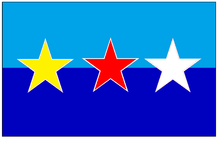 Note that, up to the present, the views of the Ruksusians regarding the future of the archipelago differ significantly. You can talk about the presence of two polar points of view. The first is the unconditional recognition of Japanese sovereignty over the Ryukyu Islands. According to this view, the population of Ruuku is regarded as an integral part of the Japanese people. The official Japanese propaganda is aimed at the “Japanization” of the Nukusians, ethno-linguistic studies aimed at the recognition of the Nuku languages as dialects of the Japanese language, and of the Nykyus themselves by the Japanese, are put under this idea. A similar situation is observed, by the way, on the northern Japanese island of Hokkaido, where the descendants of the local Ainu natives also strongly inspired the idea of the original belonging of the Ainu to the Japanese people and, accordingly, the absence of differences between the Ainu and the Japanese. Of course, the pro-Japanese sentiments in the archipelago are well-understood and utilitarian. Indeed, Japan is a rich and developed country, so being a part of Japan, the population of the Ryukyu Islands has the opportunity to enjoy all the benefits available to Japanese citizens. Moreover, over the century and a half of the Japanese administration of the Ryukyu archipelago, a significant part of its inhabitants were indeed assimilated. Many backpackers have Japanese names and speak only Japanese. An important role in the “Japaneseization” of the backpackers was played by the education system on the islands, created by Japanese standards and acting in the interests of promoting Japanese language, Japanese culture, and Japanese values among the Ryukyu people.
Note that, up to the present, the views of the Ruksusians regarding the future of the archipelago differ significantly. You can talk about the presence of two polar points of view. The first is the unconditional recognition of Japanese sovereignty over the Ryukyu Islands. According to this view, the population of Ruuku is regarded as an integral part of the Japanese people. The official Japanese propaganda is aimed at the “Japanization” of the Nukusians, ethno-linguistic studies aimed at the recognition of the Nuku languages as dialects of the Japanese language, and of the Nykyus themselves by the Japanese, are put under this idea. A similar situation is observed, by the way, on the northern Japanese island of Hokkaido, where the descendants of the local Ainu natives also strongly inspired the idea of the original belonging of the Ainu to the Japanese people and, accordingly, the absence of differences between the Ainu and the Japanese. Of course, the pro-Japanese sentiments in the archipelago are well-understood and utilitarian. Indeed, Japan is a rich and developed country, so being a part of Japan, the population of the Ryukyu Islands has the opportunity to enjoy all the benefits available to Japanese citizens. Moreover, over the century and a half of the Japanese administration of the Ryukyu archipelago, a significant part of its inhabitants were indeed assimilated. Many backpackers have Japanese names and speak only Japanese. An important role in the “Japaneseization” of the backpackers was played by the education system on the islands, created by Japanese standards and acting in the interests of promoting Japanese language, Japanese culture, and Japanese values among the Ryukyu people. On the other hand, a fairly significant part of the population of the Ryukyu Islands adheres to the idea of the necessity or desirability of separation from Japan. Thus, according to a survey, 24,9% of respondents believe that Okinawa and Ryukyu as a whole should receive political independence, if it is allowed by the Japanese state. But 20,5% of Okinawan respondents believe that independence should be obtained in any case, even if the Japanese government will oppose the separation of the archipelago. This indicates the presence of strong separatist tendencies on the island. At the heart of the national liberation movement of the backpackers is, firstly, the desire to restore historical justice - the original and unique backpacky statehood that has existed for centuries and eliminated as a result of Japanese annexation. Secondly, supporters of the independence of Ryukyu are also guided by fears that the continued presence in Japan will actually destroy the original Ruiku culture, languages, and the identity of the Ruksus, since the processes of assimilation and complete dissolution in the “Japanese world” on the Ryukyu Islands are very strong. Finally, another factor in the emergence of a strong national movement on the island of Okinawa is the pro-American foreign policy pursued by Japan. Residents of Okinawa believe the Japanese government is guilty for the presence on the island of American military bases, bringing a lot of problems for the population of the island. There are also many complaints about the poor socio-economic situation of the Ryukyu Islands. After all, Okinawa Prefecture is the most economically and socially disadvantaged region of Japan. Here is the lowest in the country standard of living of the population, less than the average life expectancy, higher the rate of spread of various diseases.
The real peak of anti-American sentiment in Okinawa was in the middle of the 1990s. and became a turning point in the history of the Okinawan-Japanese relationship. It all started with the fact that in 1995, a group of American servicemen raped a Okinawan schoolgirl. Three servicemen from an American base kidnapped and raped an 12-year-old girl. The incident caused a wave of protests from the local population. Two rapists were sentenced to ten, and one to six and a half years in prison. However, supporters of the independence of Okinawa emphasize that the American soldiers already after 1972, when the Ryukyu Islands were returned to Japanese jurisdiction, committed 4700 crimes, including 110 rape and 12 murders, in Okinawa. And this data is only for the period from 1972 to 1997 years. Rape of local girls remains the most common type of crime on the part of American military personnel who have been on the island for a long time without normal contact with the female sex, and also carry an arrogant attitude towards the Okinawans as the “natives” of the territory seized by the Americans. Residents of Okinawa are afraid to let their teenage daughters unaccompanied, as rape cases by American soldiers occur very often. Naturally, the local population makes claims in the current situation not only to the American command, but also to the Japanese authorities, since it is the latter, according to the Okinawans, who are guilty of rampant American crime on the island. In addition, Okinawans often feel resentful that residents of other Japanese islands are completely ignorant of the problems of Okinawa. The presence of US military bases does not seem to them to be something negative, since they see them rather as a source of additional funding and jobs. Meanwhile, people whose relatives have suffered from the criminal actions of the American military are overwhelmed with despair, observing the complete indifference of the Japanese government to the real interests of its people. After official Tokyo finally refused the demands to remove the American military bases from Okinawa and transfer them to another part of Japan, the separatist sentiments on the Ryukyu archipelago intensified to an even greater degree.
The anti-American sentiments that dominate Okinawa go against the official policy of the Japanese government, which is pro-American in its emphasis. If the Japanese government resolved the issue of staying at the American military bases in Okinawa, then perhaps public support for the rucksuit of the separatist movement would be significantly lower. However, the reluctance of Tokyo to meet the interests of its citizens - residents of Okinawa, pushes the latter to the path of public discontent and reflection, would not the Ryukyu Islands be better off living outside of Japan? “The bases will not disappear as long as we are under the control of the Japanese government, which is subordinate to the United States,” said Yasukatsu Matsushima, a representative of the Independent Society for the Study of the Ryukyu Nations, at a press conference. This society is in favor of achieving the independence of the Ryukyu Islands, since it is with the acquisition of political sovereignty that its supporters link and get rid of American military bases and improve the living conditions of the population of the archipelago. The Ryukyu Independence Party also operates on the island, which also, as the name implies, is seeking to achieve political sovereignty by the archipelago.
Speaking about the independence movement of the Ryukyus, one should not forget about the revival of interest in the islands from China. A number of Chinese newspapers have published articles accusing Japan of annexing the kingdom of Ryukyu, which had previously always been considered vassal towards China. Some Chinese publications expressly declare that Japan has no right to possess the Ryukyu Islands. However, the backpackers themselves refer to such a statement by the Chinese media more likely with caution - they do not want to be part of Japan because of the American military bases, but the subordination of the islands to China also does not tempt them.
- P P 'SЊSЏ RџRѕR "RѕRЅSЃRєRёR№
- http://vistanews.ru/, http://www.japanfocus.org/, http://www.ru.jal.com/, http://nihon.my1.ru/
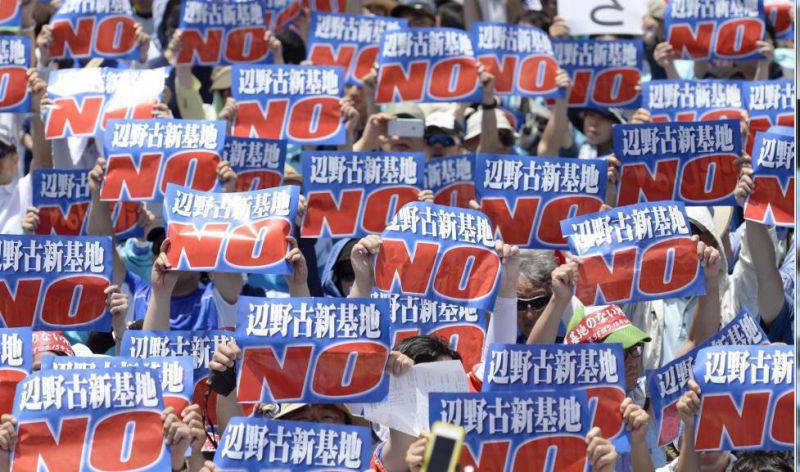
Information